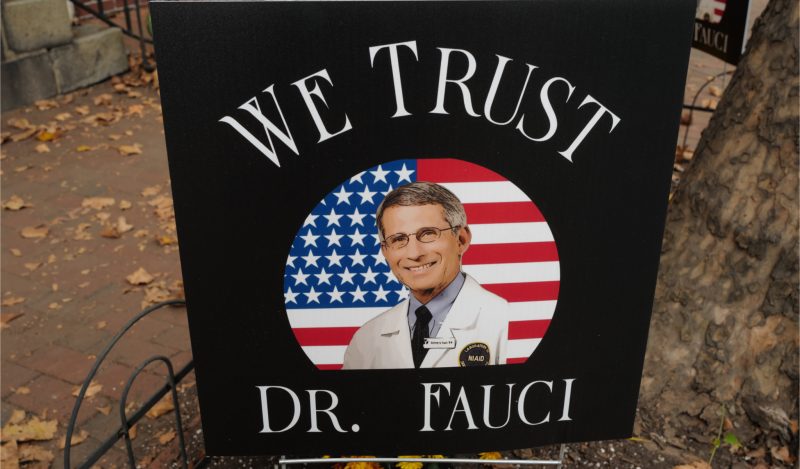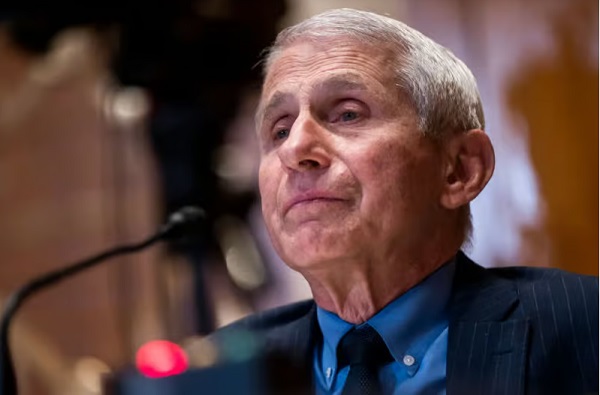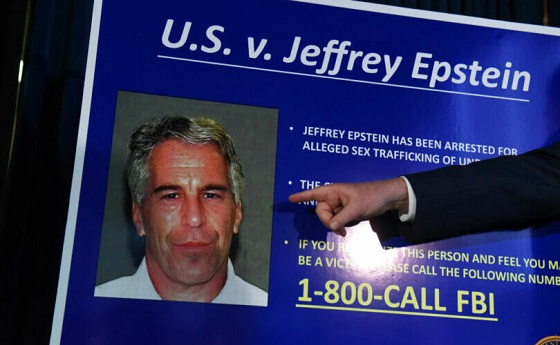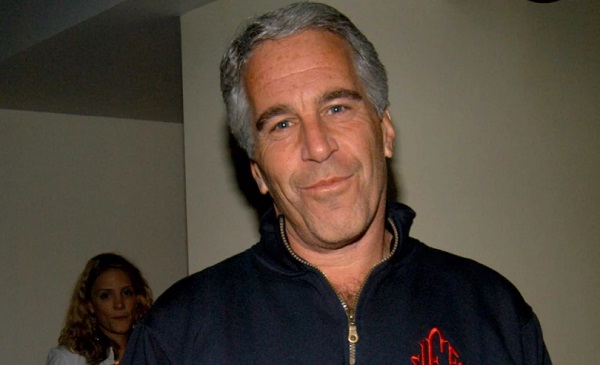Brownstone Institute
Anthony Fauci’s Very Bad Week

From the Brownstone Institute
BY
It’s not been Anthony Fauci’s best week.
Forever intent on managing his image and public opinion on the pandemic response, he accepted a seemingly safe interview on CNN. The reporter was someone he trusted, Michael Smerconish, who tossed in what he believed to be a softball question.
He asked Fauci about the Cochrane study on masks by Tom Jefferson, and, in particular the author’s comments to Brownstone fellow Maryanne Demasi. Jefferson flat out said that masks don’t work to control viruses. Smerconish simply wanted Fauci’s response.
Fauci, who might have been expected to perform better, stumbled very badly. He said that while on a population level mask evidence is weak, the evidence is stronger on an individual level. That of course is a bit of a head-scratcher, especially since he cited none of the supposed studies.
Actually, it makes no sense at all. The whole point of the Jefferson paper was to examine the best-possible evidence. The results were exactly the “science” that Fauci has touted for years. The big difference is that the results completely contradict Fauci himself. Is this guy a pathological liar?
You can watch the snippet:
CNN's @smerconish confronts Dr. Fauci with the latest evidence that masks, even N95s, made "no difference" in the pandemic. Fauci responds by basically conceding that point while adding the nonsensical claim that masks work on an "individual basis," or something.
Smerconish ends… pic.twitter.com/tZB62saxOL
— Scott Morefield (@SKMorefield) September 3, 2023
After the exchange, Smerconish reported that he texted Fauci an apology for the way the interview went, assuring him that it was not intended as a “gotcha” interview. He reported that Fauci texted him back but didn’t want to share the contents because he didn’t have permission. Interesting. I’m pretty sure that a reporter under normal circumstances would certainly share that information. But as we know, Fauci is in a league of his own.
In addition, some very interesting email correspondence came out, thanks to a FOIA request by US Right to Know. The communication to Fauci was courtesy of Fauci’s chief of staff Greg Folkers and on behalf of Fauci’s frequent co-author David Morens. The date was January 27, 2020, about the time that China’s experience with SARS-CoV-2 was making the news all over the US. (I wrote my first article against lockdowns for Covid the next day.)
“EcoHealth group (Peter Daszak et al), has for years been among the biggest players in coronavirus work, also in collaboration with Ralph Baric, Ian Lipkin and others,” wrote Folkers. In the past 5 years, and working with the Wuhan Institute of Virology, they had discovered hundreds of coronaviruses circulating in China. Further, the memo said, “clinical signs of bat SARS-CoVs in mice were not prevented with a vaccine candidate against SARS-CoV, and were not treatable with most monoclonal therapies being developed.”
Here is the full memo:
 The timing here checks out against Jeremy Farrar’s own memoir:
The timing here checks out against Jeremy Farrar’s own memoir:
“By the second week of January, I was beginning to realise the scale of what was happening. I was also getting the uncomfortable feeling that some of the information needed by scientists all around the world to detect and fight this new disease was not being disclosed as fast as it could be. I did not know it then, but a fraught few weeks lay ahead. In those weeks, I became exhausted and scared. I felt as if I was living a different person’s life. During that period, I would do things I had never done before: acquire a burner phone, hold clandestine meetings, keep difficult secrets. I would have surreal conversations with my wife, Christiane, who persuaded me we should let the people closest to us know what was going on. I phoned my brother and best friend to give them my temporary number. In hushed conversations, I sketched out the possibility of a looming global health crisis that had the potential to be read as bioterrorism. ‘If anything happens to me in the next few weeks,’ I told them nervously, ‘this is what you need to know.’”
Wow, these guys believed they would be off’d! That’s some crazy stuff there.
These weeks were the critical turning point. China had already locked down. Farrar reports that “the world had all the information it needed by 24 January: a potentially fatal novel respiratory disease that could spread between people without symptoms, with no vaccines or treatments, that had already ravaged a huge, highly connected Chinese city.”
Then the possibility of a lab leak became very obvious in these days. “In the last week of January 2020,” he writes, “I saw email chatter from scientists in the US suggesting the virus looked almost engineered to infect human cells. These were credible scientists proposing an incredible, and terrifying, possibility of either an accidental leak from a laboratory or a deliberate release.”
This fits exactly with the above memo to Fauci. It was at this point that the cool-and-collected Fauci organized the authors of what became the “Proximal Origin” paper that denied it was a lab leak, the first draft of which was circulated on February 4. Among the authors was a virologist who had worked with EcoHealth.
You can look through the entire timeline and see that this all checks out. It seems ever clearer what was going on here. Fauci and his cohorts were alerted to NIH funding of the Wuhan lab. They became convinced of the very strong likelihood that this was a lab leak, accidental or deliberate. This began to make some sense of other reports from many months earlier of sick soldiers returning from the Military World Games. They panicked and they worked on a cover-up.
Why did they panic? Was it for fear of the public health consequences of a rapidly spreading virus? More likely, they panicked that they would rightly be blamed for it because the lab was funded through a third party by US taxpayers. They must also have known that they were doing gain-of-function research: the idea that labs create viruses and then also manufacture the antidote in the form of a vaccine. But according to the report on Fauci’s desk, no vaccine works for this one or others in this class of virus.
Fauci defaulted to the only action he could think of at the time: use lockdowns to minimize the spread. His staff had already taken a junket to Wuhan and returned with a report dated February 24, 2020 that said that lockdowns worked to suppress viral spread.
Lacking any better ideas, Fauci decided to push lockdowns as a way of minimizing the damage and keeping his reputation out of harm’s way by 1) denying the lab leak with a seemingly credible paper, and 2) causing a hugely distracting amount of chaos with a lockdown that they convinced Donald Trump himself to back.
This would of course wreck the Trump presidency, which was a bonus from the point of view of the military intelligence that was already working to implement protocols from their recently concluded “germ games.”
Next in line came the necessity to involve the New York Times, which on February 28 ran an article calling for the US to “go medieval” on the virus in addition to an article by Peter Dazsak himself on the op-ed page!
Four days later, Fauci told Michael Gerson of the Washington Post on March 2, 2020, that no vaccine would be needed to get over the pandemic. “Social distancing is not really geared to wait for a vaccine,” wrote Fauci. “The epidemic will gradually decline and stop on its own without a vaccine.”
Why would he say this? Again, Fauci had been told that no vaccine in China seemed to work. Plus, he is not a stupid man – coronaviruses mutate too quickly – and had years of attempts to vaccinate against AIDS without success. So his thinking was that using force to stop the spread was the only real option for a man who was seeking to “cover his ass,” as the expression goes.
The big problem with the plan, of course, was that there was no exit strategy. As soon as you open up, the virus is going to spread anyway. This was why Fauci welcomed all attempts at creating a vaccine anyway. At least the vaccine would provide an excuse to end the lockdowns.
But just in case it did not, he worked with his co-author David Morens on a big think piece that came out in Cell in August 2020. This was the paper that said lockdowns should really be permanent.
“Living in greater harmony with nature,” they wrote, “will require changes in human behavior as well as other radical changes that may take decades to achieve: rebuilding the infrastructures of human existence, from cities to homes to workplaces, to water and sewer systems, to recreational and gatherings venues.”
Despite Fauci’s wishes, the most extreme aspects of lockdowns gradually faded away in time, most anointed experts can pretend as if the vaccine ended the worst aspects of the pandemic (that’s why the mandates became necessary, if only to maximize uptake and confound the science), and Fauci keeps going on national television, despite his age and wealth, to dial back his responsibility for any aspect of it, including the lockdowns he is on record backing from February 26, 2020, onward.
In any case, this is a summary of current knowledge. There are of course many other layers to this onion, including the early involvement of the pharmaceutical companies and the extensive intervention by the Department of Defense. Sadly, much of the necessary information to sort through that thicket is wholly classified.
Thus ends Fauci’s not-so-good week. We’ll get to the bottom of this eventually.
Author
Brownstone Institute
FDA Exposed: Hundreds of Drugs Approved without Proof They Work

From the Brownstone Institute
By
The US Food and Drug Administration (FDA) has approved hundreds of drugs without proof that they work—and in some cases, despite evidence that they cause harm.
That’s the finding of a blistering two-year investigation by medical journalists Jeanne Lenzer and Shannon Brownlee, published by The Lever.
Reviewing more than 400 drug approvals between 2013 and 2022, the authors found the agency repeatedly ignored its own scientific standards.
One expert put it bluntly—the FDA’s threshold for evidence “can’t go any lower because it’s already in the dirt.”
A System Built on Weak Evidence
The findings were damning—73% of drugs approved by the FDA during the study period failed to meet all four basic criteria for demonstrating “substantial evidence” of effectiveness.
Those four criteria—presence of a control group, replication in two well-conducted trials, blinding of participants and investigators, and the use of clinical endpoints like symptom relief or extended survival—are supposed to be the bedrock of drug evaluation.
Yet only 28% of drugs met all four criteria—40 drugs met none.
These aren’t obscure technicalities—they are the most basic safeguards to protect patients from ineffective or dangerous treatments.
But under political and industry pressure, the FDA has increasingly abandoned them in favour of speed and so-called “regulatory flexibility.”
Since the early 1990s, the agency has relied heavily on expedited pathways that fast-track drugs to market.
In theory, this balances urgency with scientific rigour. In practice, it has flipped the process. Companies can now get drugs approved before proving that they work, with the promise of follow-up trials later.
But, as Lenzer and Brownlee revealed, “Nearly half of the required follow-up studies are never completed—and those that are often fail to show the drugs work, even while they remain on the market.”
“This represents a seismic shift in FDA regulation that has been quietly accomplished with virtually no awareness by doctors or the public,” they added.
More than half the approvals examined relied on preliminary data—not solid evidence that patients lived longer, felt better, or functioned more effectively.
And even when follow-up studies are conducted, many rely on the same flawed surrogate measures rather than hard clinical outcomes.
The result: a regulatory system where the FDA no longer acts as a gatekeeper—but as a passive observer.
Cancer Drugs: High Stakes, Low Standards
Nowhere is this failure more visible than in oncology.
Only 3 out of 123 cancer drugs approved between 2013 and 2022 met all four of the FDA’s basic scientific standards.
Most—81%—were approved based on surrogate endpoints like tumour shrinkage, without any evidence that they improved survival or quality of life.
Take Copiktra, for example—a drug approved in 2018 for blood cancers. The FDA gave it the green light based on improved “progression-free survival,” a measure of how long a tumour stays stable.
But a review of post-marketing data showed that patients taking Copiktra died 11 months earlier than those on a comparator drug.
It took six years after those studies showed the drug reduced patients’ survival for the FDA to warn the public that Copiktra should not be used as a first- or second-line treatment for certain types of leukaemia and lymphoma, citing “an increased risk of treatment-related mortality.”
Elmiron: Ineffective, Dangerous—And Still on the Market
Another striking case is Elmiron, approved in 1996 for interstitial cystitis—a painful bladder condition.
The FDA authorized it based on “close to zero data,” on the condition that the company conduct a follow-up study to determine whether it actually worked.
That study wasn’t completed for 18 years—and when it was, it showed Elmiron was no better than placebo.
In the meantime, hundreds of patients suffered vision loss or blindness. Others were hospitalized with colitis. Some died.
Yet Elmiron is still on the market today. Doctors continue to prescribe it.
“Hundreds of thousands of patients have been exposed to the drug, and the American Urological Association lists it as the only FDA-approved medication for interstitial cystitis,” Lenzer and Brownlee reported.
“Dangling Approvals” and Regulatory Paralysis
The FDA even has a term—”dangling approvals”—for drugs that remain on the market despite failed or missing follow-up trials.
One notorious case is Avastin, approved in 2008 for metastatic breast cancer.
It was fast-tracked, again, based on ‘progression-free survival.’ But after five clinical trials showed no improvement in overall survival—and raised serious safety concerns—the FDA moved to revoke its approval for metastatic breast cancer.
The backlash was intense.
Drug companies and patient advocacy groups launched a campaign to keep Avastin on the market. FDA staff received violent threats. Police were posted outside the agency’s building.
The fallout was so severe that for more than two decades afterwards, the FDA did not initiate another involuntary drug withdrawal in the face of industry opposition.
Billions Wasted, Thousands Harmed
Between 2018 and 2021, US taxpayers—through Medicare and Medicaid—paid $18 billion for drugs approved under the condition that follow-up studies would be conducted. Many never were.
The cost in lives is even higher.
A 2015 study found that 86% of cancer drugs approved between 2008 and 2012 based on surrogate outcomes showed no evidence that they helped patients live longer.
An estimated 128,000 Americans die each year from the effects of properly prescribed medications—excluding opioid overdoses. That’s more than all deaths from illegal drugs combined.
A 2024 analysis by Danish physician Peter Gøtzsche found that adverse effects from prescription medicines now rank among the top three causes of death globally.
Doctors Misled by the Drug Labels
Despite the scale of the problem, most patients—and most doctors—have no idea.
A 2016 survey published in JAMA asked practising physicians a simple question—what does FDA approval actually mean?
Only 6% got it right.
The rest assumed that it meant the drug had shown clear, clinically meaningful benefits—such as helping patients live longer or feel better—and that the data was statistically sound.
But the FDA requires none of that.
Drugs can be approved based on a single small study, a surrogate endpoint, or marginal statistical findings. Labels are often based on limited data, yet many doctors take them at face value.
Harvard researcher Aaron Kesselheim, who led the survey, said the results were “disappointing, but not entirely surprising,” noting that few doctors are taught about how the FDA’s regulatory process actually works.
Instead, physicians often rely on labels, marketing, or assumptions—believing that if the FDA has authorized a drug, it must be both safe and effective.
But as The Lever investigation shows, that is not a safe assumption.
And without that knowledge, even well-meaning physicians may prescribe drugs that do little good—and cause real harm.
Who Is the FDA Working for?
In interviews with more than 100 experts, patients, and former regulators, Lenzer and Brownlee found widespread concern that the FDA has lost its way.
Many pointed to the agency’s dependence on industry money. A BMJ investigation in 2022 found that user fees now fund two-thirds of the FDA’s drug review budget—raising serious questions about independence.

Yale physician and regulatory expert Reshma Ramachandran said the system is in urgent need of reform.
“We need an agency that’s independent from the industry it regulates and that uses high-quality science to assess the safety and efficacy of new drugs,” she told The Lever. “Without that, we might as well go back to the days of snake oil and patent medicines.”
For now, patients remain unwitting participants in a vast, unspoken experiment—taking drugs that may never have been properly tested, trusting a regulator that too often fails to protect them.
And as Lenzer and Brownlee conclude, that trust is increasingly misplaced.
- Investigative report by Jeanne Lenzer and Shannon Brownlee at The Lever [link]
- Searchable public drug approval database [link]
- See my talk: Failure of Drug Regulation: Declining standards and institutional corruption
Republished from the author’s Substack
Brownstone Institute
Anthony Fauci Gets Demolished by White House in New Covid Update

From the Brownstone Institute
By
Anthony Fauci must be furious.
He spent years proudly being the public face of the country’s response to the Covid-19 pandemic. He did, however, flip-flop on almost every major issue, seamlessly managing to shift his guidance based on current political whims and an enormous desire to coerce behavior.
Nowhere was this more obvious than his dictates on masks. If you recall, in February 2020, Fauci infamously stated on 60 Minutes that masks didn’t work. That they didn’t provide the protection people thought they did, there were gaps in the fit, and wearing masks could actually make things worse by encouraging wearers to touch their face.
Just a few months later, he did a 180, then backtracked by making up a post-hoc justification for his initial remarks. Laughably, Fauci said that he recommended against masks to protect supply for healthcare workers, as if hospitals would ever buy cloth masks on Amazon like the general public.
Later in interviews, he guaranteed that cities or states that listened to his advice would fare better than those that didn’t. Masks would limit Covid transmission so effectively, he believed, that it would be immediately obvious which states had mandates and which didn’t. It was obvious, but not in the way he expected.

And now, finally, after years of being proven wrong, the White House has officially and thoroughly rebuked Fauci in every conceivable way.
White House Covid Page Points Out Fauci’s Duplicitous Guidance
A new White House official page points out, in detail, exactly where Fauci and the public health expert class went wrong on Covid.
It starts by laying out the case for the lab-leak origin of the coronavirus, with explanations of how Fauci and his partners misled the public by obscuring information and evidence. How they used the “FOIA lady” to hide emails, used private communications to avoid scrutiny, and downplayed the conduct of EcoHealth Alliance because they helped fund it.
They roast the World Health Organization for caving to China and attempting to broaden its powers in the aftermath of “abject failure.”
“The WHO’s response to the COVID-19 pandemic was an abject failure because it caved to pressure from the Chinese Communist Party and placed China’s political interests ahead of its international duties. Further, the WHO’s newest effort to solve the problems exacerbated by the COVID-19 pandemic — via a “Pandemic Treaty” — may harm the United States,” the site reads.
Social distancing is criticized, correctly pointing out that Fauci testified that there was no scientific data or evidence to support their specific recommendations.
“The ‘6 feet apart’ social distancing recommendation — which shut down schools and small business across the country — was arbitrary and not based on science. During closed door testimony, Dr. Fauci testified that the guidance ‘sort of just appeared.’”
There’s another section demolishing the extended lockdowns that came into effect in blue states like California, Illinois, and New York. Even the initial lockdown, the “15 Days to Slow the Spread,” was a poorly reasoned policy that had no chance of working; extended closures were immensely harmful with no demonstrable benefit.
“Prolonged lockdowns caused immeasurable harm to not only the American economy, but also to the mental and physical health of Americans, with a particularly negative effect on younger citizens. Rather than prioritizing the protection of the most vulnerable populations, federal and state government policies forced millions of Americans to forgo crucial elements of a healthy and financially sound life,” it says.
Then there’s the good stuff: mask mandates. While there’s plenty more detail that could be added, it’s immensely rewarding to see, finally, the truth on an official White House website. Masks don’t work. There’s no evidence supporting mandates, and public health, especially Fauci, flip-flopped without supporting data.
“There was no conclusive evidence that masks effectively protected Americans from COVID-19. Public health officials flipped-flopped on the efficacy of masks without providing Americans scientific data — causing a massive uptick in public distrust.”
This is inarguably true. There were no new studies or data justifying the flip-flop, just wishful thinking and guessing based on results in Asia. It was an inexcusable, world-changing policy that had no basis in evidence, but was treated as equivalent to gospel truth by a willing media and left-wing politicians.
Over time, the CDC and Fauci relied on ridiculous “studies” that were quickly debunked, anecdotes, and ever-shifting goal posts. Wear one cloth mask turned to wear a surgical mask. That turned into “wear two masks,” then wear an N95, then wear two N95s.
All the while ignoring that jurisdictions that tried “high-quality” mask mandates also failed in spectacular fashion.

And that the only high-quality evidence review on masking confirmed no masks worked, even N95s, to prevent Covid transmission, as well as hearing that the CDC knew masks didn’t work anyway.
The website ends with a complete and thorough rebuke of the public health establishment and the Biden administration’s disastrous efforts to censor those who disagreed.
“Public health officials often mislead the American people through conflicting messaging, knee-jerk reactions, and a lack of transparency. Most egregiously, the federal government demonized alternative treatments and disfavored narratives, such as the lab-leak theory, in a shameful effort to coerce and control the American people’s health decisions.
When those efforts failed, the Biden Administration resorted to ‘outright censorship—coercing and colluding with the world’s largest social media companies to censor all COVID-19-related dissent.’”
About time these truths are acknowledged in a public, authoritative manner. Masks don’t work. Lockdowns don’t work. Fauci lied and helped cover up damning evidence.
If only this website had been available years ago.
Though, of course, knowing the media’s political beliefs, they’d have ignored it then, too.
Republished from the author’s Substack
-

 Alberta2 days ago
Alberta2 days agoCOWBOY UP! Pierre Poilievre Promises to Fight for Oil and Gas, a Stronger Military and the Interests of Western Canada
-

 Alberta2 days ago
Alberta2 days agoAlberta and Ontario sign agreements to drive oil and gas pipelines, energy corridors, and repeal investment blocking federal policies
-

 Crime1 day ago
Crime1 day ago“This is a total fucking disaster”
-

 International2 days ago
International2 days agoChicago suburb purchases childhood home of Pope Leo XIV
-

 Fraser Institute1 day ago
Fraser Institute1 day agoBefore Trudeau average annual immigration was 617,800. Under Trudeau number skyrocketted to 1.4 million annually
-

 MAiD1 day ago
MAiD1 day agoCanada’s euthanasia regime is already killing the disabled. It’s about to get worse
-

 Daily Caller2 days ago
Daily Caller2 days agoBlackouts Coming If America Continues With Biden-Era Green Frenzy, Trump Admin Warns
-

 Daily Caller2 days ago
Daily Caller2 days ago‘I Know How These People Operate’: Fmr CIA Officer Calls BS On FBI’s New Epstein Intel









